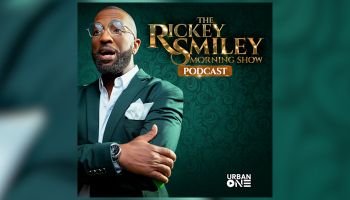The federal government and the state of Texas won’t recognize Noel Freeman’s eight-year relationship with another man as marriage, but the 2010 U.S. census will.
For the first time, the census will publish data on same-sex spouses who self-identify as married on their census forms, even though they cannot legally wed in Texas or 44 other states.
“There is a benefit to demonstrating that gay and lesbian couples are more common than some people might think,” Freeman said, “and I think that it’s important for people to know that yes, we are out there, and yes, we do take our relationships seriously.”
When census forms arrive this week at the Heights home Freeman shares with Brad Pritchett, the 33-year-old administrative specialist plans to check the box for “husband” on the question that asks how he is related to Pritchett, 30.
“We’re as close to married as we can be,” Freeman said. “I don’t need a piece of paper to validate what we have.”
Debunking myths
Census officials say it will be up to respondents to decide how to characterize their relationships. Houston Mayor Annise Parker, for example, plans to check the box for “unmarried partner” when she fills out her household’s census form, said her spokeswoman, Janice Evans. Parker has been with her life partner, Kathy Hubbard, for 20 years. The couple has two children.
“The data that’s gathered in the census is useful in debunking myths about gay people from the standpoint that it shows their geographic diversity, racial diversity, economic diversity, and it shows that many of them are raising children,” said Chuck Smith, interim executive director of Equality Texas, an Austin-based group that advocates for lesbian, gay, bisexual and transgender rights.
The U.S. Census Bureau is encouraging same-sex couples to participate in the decennial count by advertising in LGBT publications and hosting town hall meetings.
Priority is accuracy
Although the legality of same-sex marriage is a contentious issue, census officials say they simply want an accurate snapshot of how all Americans see themselves and their relationships.
The data collected by the Census Bureau will “shine a light” into the nation’s LGBT communities, said Gabriel Sanchez, director of the Dallas Regional Census Center.
“It is not our purpose to count sexual orientation,” he said. “We don’t ask about sexual orientation, but what we have done is we will record and will publish that people are same-sex married.”
Census officials added a category for “unmarried partner” to the questionnaire in 1990, but same-sex couples who identified as “husband” or “wife” were counted as opposite-sex married couples, as if one partner had erred in reporting his or her gender.
In 2000, the Bush administration cited the Defense of Marriage Act and directed the Census Bureau to re-code same-sex couples who reported they were married as unmarried same-sex partners. The Obama administration has reversed that policy, allowing the bureau to count same-sex couples as married.
Reports in two years
In 2012, the bureau will use the raw relationship data from the 2010 census to publish reports on the characteristics and demographics of both unmarried and married same-sex couples.
Freeman isn’t convinced the information gathered will be useful to analysts because the data won’t distinguish between same-sex couples who consider themselves de-facto married and those who exchanged formal vows in civil unions or marriages in states that allow them. But he said the change in census policy is a step in the right direction.
“There is a stereotype that gays are promiscuous, but if society were to encourage and reinforce stable monogamous relationships, then that stereotype might get broken down,” Freeman said. “That’s why I think some level of recognition of same-sex relationships is important, because it will reinforce and encourage same-sex relationships.”
Via: Chron.com










